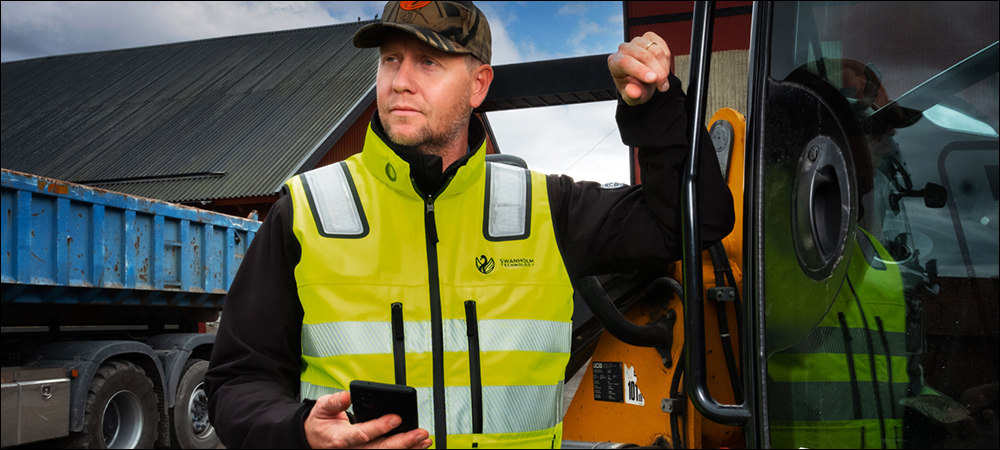- Design Engineered with Imagimob
- How the Alert Vest Works
- Receiving Updates Over the Air
- Enabling Changes and Upgrades
Swedish startup company Swanholm Technology is selling a connected vest solution known as the Alert Vest, which is intended to keep employees safe and provide data that can help businesses better manage the environments in which people work. The solution, provided by Swanholm Technology, includes artificial intelligence (AI) development from Imagimob.
The Alert Vest is being worn by truck drivers, construction workers and utility linemen throughout five European countries. The vest comes with battery-powered sensors that detect the movements of the individual wearing it, as well as a built-in processor that analyzes that data onboard before issuing an alert via Bluetooth Low Energy (BLE) to the worker’s smartphone. The smartphone uses the Alert Vest app to then forward an SMS text message. The vest includes active printed lights that can turn on or off automatically, based on the wearer’s movements.
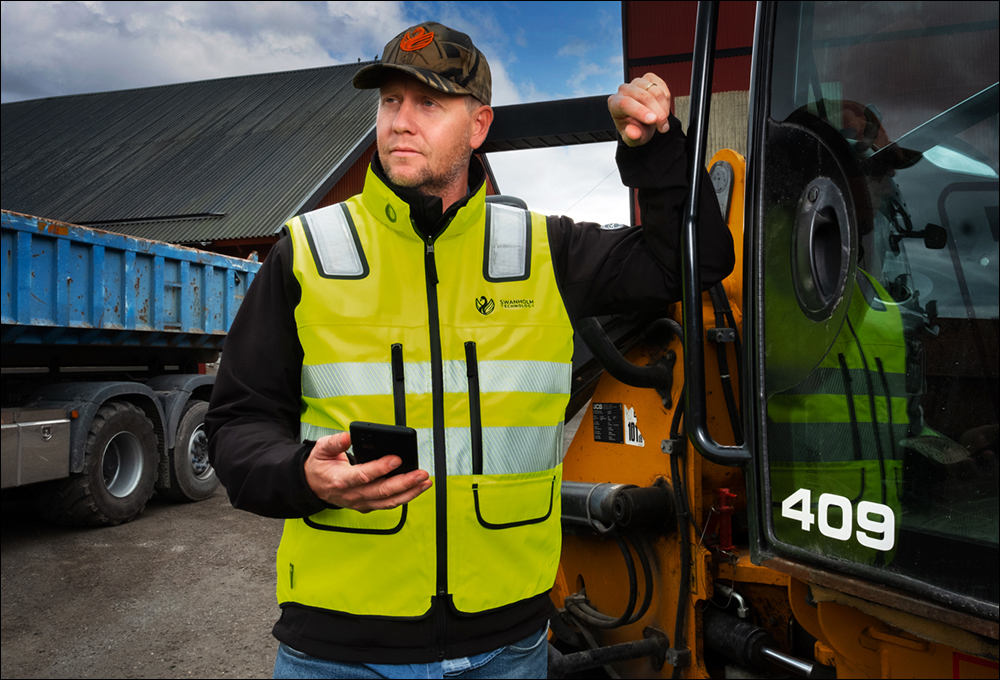
The Alert Vest is being worn by truck drivers, construction workers and utility linemen throughout five European countries.
Design Engineered with Imagimob
The solution was developed by Jonas Svanholm, who is Swanholm Technology’s president and founder, as well as the former digital business director of Scania Group. The company, located in Bromma, Sweden, was focused on offering connected safety products for truck drivers and other risk- exposed workers. “The main purpose is very straightforward: to make the end user safer and provide the owners with insight how to build a safer work environment,” Svanholm says. He began designing the vest while working for Scania.
“We got the task to look into why truck drivers had the highest death rate in Sweden among workers,” Svanholm recalls. According to a report from Arbetsmiljöverket, truck operators experienced the most fatality accidents among Swedish workers, with 66 such deaths between 2011 and 2020. Svanholm considered where the risks are greatest and found that the cab is fairly safe, while the greatest hazard for drivers was when they were outside of their vehicle. He decided, “Let’s build something with AI that helps people [as they move] around the vehicle.”
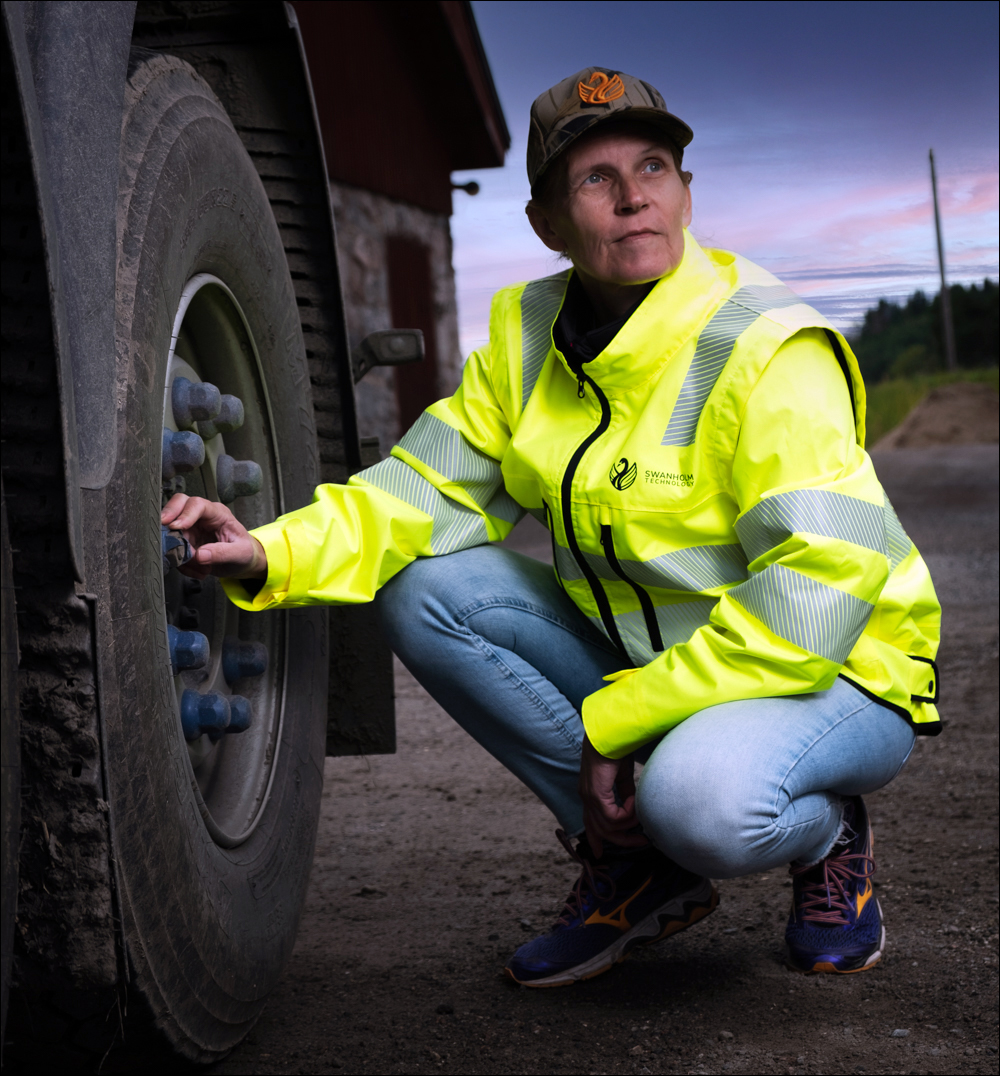
The greatest hazard for drivers is when they are outside their vehicle.
Before building a potential solution, Svanholm says, the Scania team worked with vest manufacturers, engineers, transport and construction companies, and the end users who wear the vests. He also contacted Imagimob, which initiated a series of development iteration cycles that led to the founding of Swanholm Technology. The company partnered with Imagimob to release the final product and market it in 2020.
The Alert Vest provides three types of alarms: one to alert management of a fall, based on sensor analysis via AI; a second to enable manual alerts triggered by workers; and a timer alarm to notify workers if they remain in a hazardous environment beyond a limited time. Each vest’s Bosch BMI-160 sensor includes an accelerometer and a gyroscope. The sensors are designed to be low-power, consuming 180 μA for the accelerometer when in full operation and 3µA in suspended mode.
How the Alert Vest Works
Each worker would typically be assigned a vest that they would wear whenever they were on a jobsite or operating a company vehicle. Each vest has a unique ID number that it transmits when reporting an incident. Most of the time, the vest’s alerting system remains dormant. It does not transmit data unless a pre-determined threat threshold has been reached. For instance, the vest could identify a 1-meter fall and, based on its programming, send a text message. A company’s human resources department could access the identity of the worker linked to the vest’s ID, if the company chose to use the system in that way. However, Svanholm notes, the Alert Vest software does not track individuals, only the vest itself.
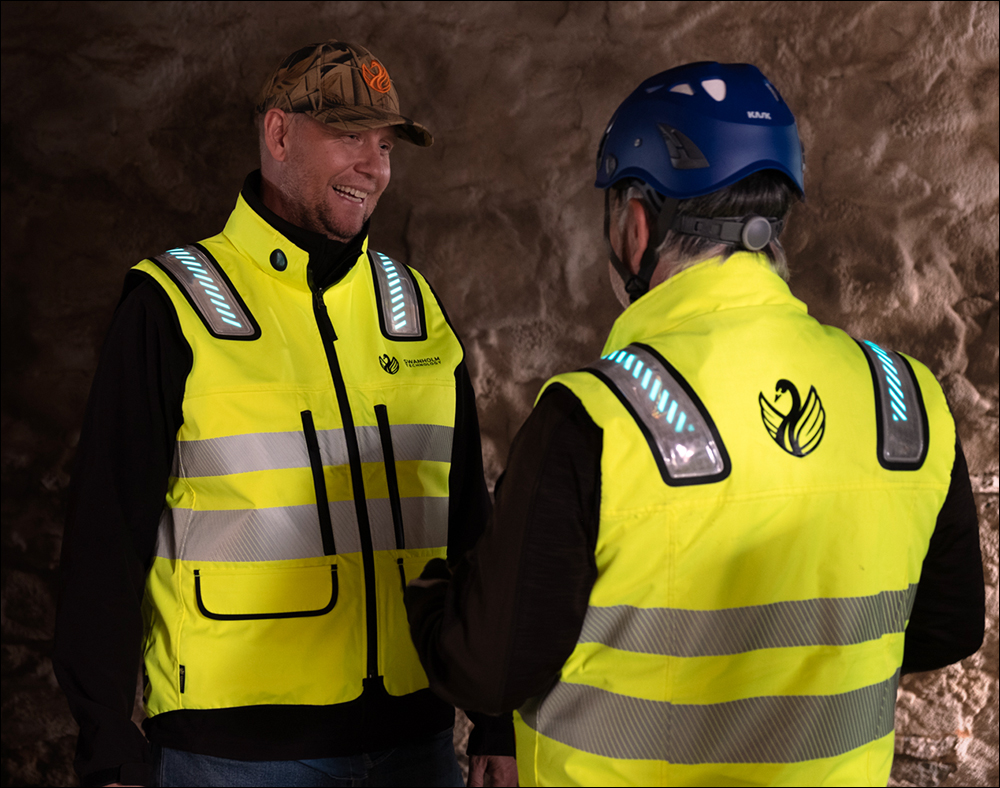
If a worker presses the button, the BLE transmission prompts a text message indicating help is needed.
The device is equipped with a timer that starts when a fall is detected, allowing a grace period for the user to reset the vest. During that time, the wearer hears audible warning beeps from the vest and can press a button to deactivate the alert if no assistance is required. That grace period is customizable but is often approximately 30 seconds. If the alert is not deactivated during that span of time, a message is sent to the user’s smartphone via BLE, containing the alert status and the vest’s unique ID. The phone, running the Alert Vest app, then sends an SMS text message to an authorized manager.
The connected vest is equipped with a push-button switch on its front, which the wearer can use to send an alert in the event of an incident, such as an operator becoming stuck, wedged or pinned down on a worksite without being able to call for help. If a worker presses the button, the BLE transmission prompts a text message indicating help is needed. With each alert message, data is linked to the GPS-based location of the individual captured by the smartphone, enabling managers to quickly dispatch help to the proper location.
Receiving Updates Over the Air
The system can be customized according to a company’s specific needs. For example, users can write their own message that a supervisor should receive, and they can change the parameters that will prompt an alert in the first place. The Alert Vest costs about $400 individually, but the price is less when vests are purchased in bulk.
The vests are made affordable through engineering efforts, according to Anders Hardebring, Imagimob’s CEO and cofounder. That includes AI- and edge-based computing so that the vest only transmits an alert once its built-in processor confirms an event has happened. “The actual detection of the fall is made on the edge,” Hardebring explains, “with the machine learning on the chip. Therefore, [the vest is] not sending sensor data—it’s sending the classification.”
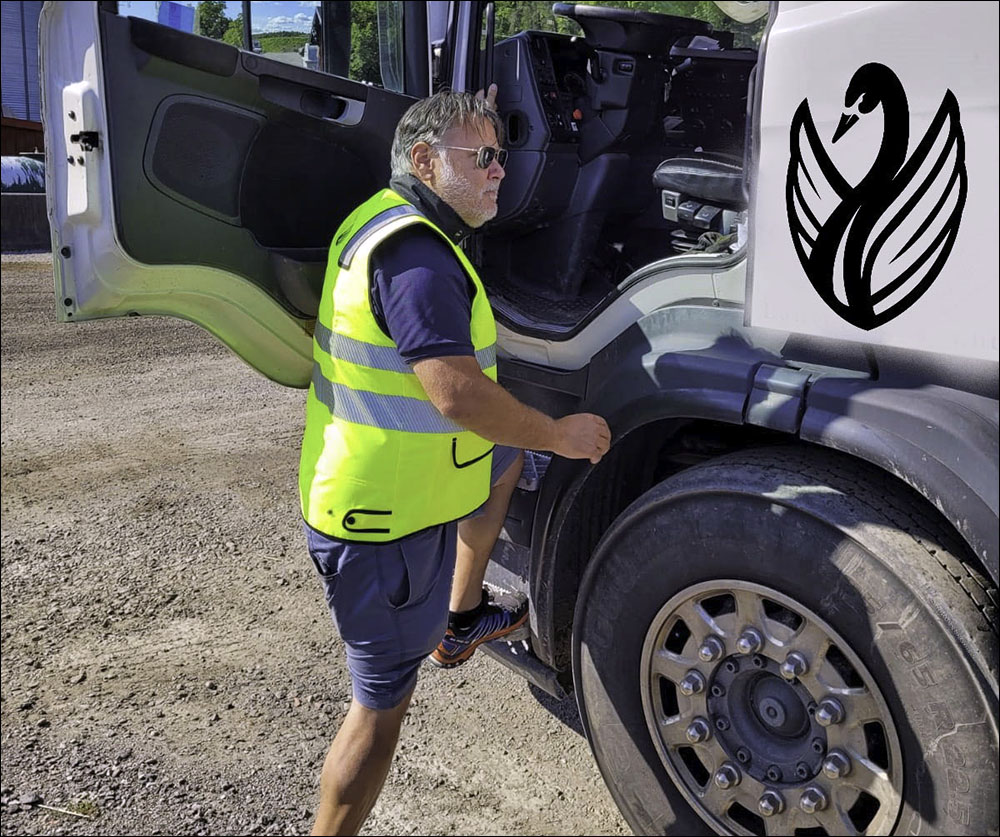
If the system determines a driver has stepped down from a vehicle, that motion can prompt the vest light to turn on.
Future versions of the system could use AI and machine learning to learn the wearer’s behaviors and adapt responses accordingly, Hardebring says. In all versions, however, the devices are intended to be used without identifying workers. “One of the important features of the system is protecting privacy,” Svanholm states. “When we talk to customers, one of the first things they ask about is privacy [and not] tracking the person.” He adds, “That is something that we don’t want to do.”
The technology can detect movements that trigger the illumination of printed lights built into the vest. If the system determines that a truck driver has stepped down from the vehicle, for instance—based on a drop in elevation—that motion can prompt the vest light to turn on. Once the driver climbs back inside, the light will turn off. In that way, if a driver leaves the truck while on a roadside, cars passing will automatically be warned by the lighted vest. Hardbring says there are three classifications in the model that the vest’s AI system is looking for: “Is the driver entering the truck, exiting the traffic truck or is he falling?”
Enabling Changes and Upgrades
Different versions of the solution could detect other events, Svanholm. This could include if a worker stops moving entirely, indicating they may be having a health problem or have been injured. To enable changes and upgrades to the system, the vest can receive over-the-air updates via Bluetooth. Additionally, other sensors could be added to detect chemical presence or elevation. For example, if a worker climbed to a specified height, the vest could detect that elevation and trigger a reminder to the worker to put their safety harness on.
If companies wished to have specific data about a user’s location, they could deploy BLE beacons in areas such as construction sites. The beacons would then receive transmissions from the vests and thereby pinpoint their locations. “We can tailor-make the solution,” Svanholm says. The goal for the company, however, is to help its customers solve specific challenges, rather than simply introduce a new technology to a company’s worksite.
So far, the company has worked with customers in Finland, Germany, Sweden, Denmark and Spain. The goal, Svanholm says, is to continue providing the technology across Europe initially, and to then expand globally. “We would like to succeed here in Europe,” he states, “and then we would like to move to the United States” and beyond.
Key Takeaways:
- The Swedish technology startup is offering its Alert Vest with BLE functionality to automatically transmit worker safety events based on detected falls.
- The system can be customized according to a company’s needs, with future iterations possible, and over-the-air alerts and new sensors as options.

